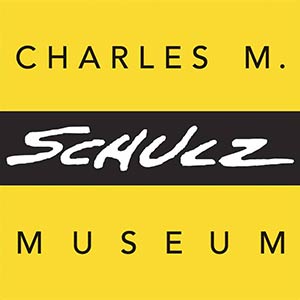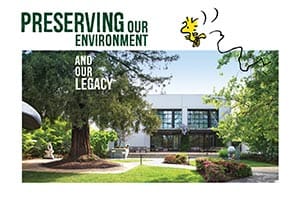Preserving our 100 Year Old Redwood Tree
I think readers can tell things that I am passionate about; this is one of them.
When we chose this site for the Museum the trees around the property were very important to us, and architect David Robinson and his team were very thoughtful about the trees.

This redwood tree became the centerpiece of the Museum courtyard. Over the years we have tried to protect the tree, putting bark at the base, etc. However, it is too attractive a place for children to run up and slip down!
About a year ago we began planning a deck on piers which would both protect the tree and take advantage of its beautiful shade while providing a space for visitors to gather at any time of the year.

The concrete reinforced piers, which will have to go 5 feet deep—below the root zone of the redwood—required careful planning.

Working together, the arborist and the engineers calculated a ‘zone’ for the piers so that if in their digging, workers encountered a root, they could simply ‘slide’ over and dig another hole, avoiding that root and allowing them to go down 5 feet. Having dug 3/4 of the holes for the 28 piers, they have had to adjust 6 to avoid roots (it is still a LOT of digging).

Here they are leveling the bench to determine the placement of the bench-supporting girders.

The forms for the concrete have been placed in the holes. After a visit from the County inspector, the concrete will be poured.

The rebar in the form provides reinforcement for the concrete.

The concrete truck has arrived!


Concrete is poured in the piers with a long hose that runs from the concrete truck parked on the other side of the Museum.

Once the concrete has dried, earth is filled in around the steps and concrete piers.

These are the steps that would approach the deck from Lucy’s baseball cap.

This is the level of the bench when finished. Construction of the deck starts from the bench and works outward.

Kevin, the project foreman, is working in the shade of Lucy’s baseball cap and uses the birdbath as his worktable.


Friday’s work involved placing the support beams that will be the foundation for the deck.

The deck is taking shape. I’m so excited!

You can already see what a beautiful setting the deck will be when finished.

A good close up.

The workman is welding the iron uprights. I couldn’t look because the light from the welding torch is dangerously bright.

Our facility manager, Toma Day, researched the best materials for this job and chose Ipe, a tropical hardwood. This is such a dense and heavy wood that the joists have to be closer than the usual 3 or 4 feet, and the usual method of screwing the top decking to the two by fours of the framework will not work. The screws have to be pre-drilled and counter sunk.
Also, every end cut has to be covered with wax to prevent moisture ‘wicking’ into it and causing ‘cupping’ which will pull the screws out of the subfloor.
It’s good to know why the process is taking so long, and comforting to know it will produce a deck that will have the longevity of the redwood itself.
I’ll add updates about this project as the work continues, so stay tuned.
–Jean Schulz




